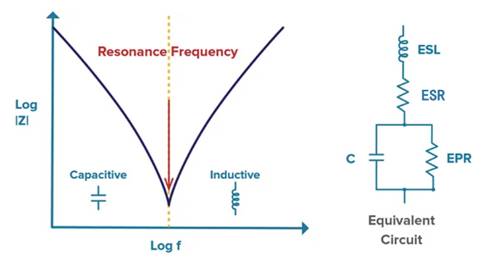Exploring the Frequency Characteristics of Capacitors
Time:2023-12-28
Views:411
Basically, capacitors are capable of storing charges and making it easier to pass through higher frequency AC currents, which are the two most obvious characteristics of capacitors. However, at very high frequencies, parasitic parameters of capacitors such as series resistance and inductance can have a significant impact on the ideal performance of capacitors.

The mathematical description of an ideal capacitor is that as the frequency increases, the impedance | Z | approaches zero. Actual testing shows that the frequency boundary of impedance is related to specific applications and the components themselves. At this boundary, the equivalent series inductance (ESL) of the capacitor will form an LC resonant circuit with itself, which is called the self resonant frequency (SRF). Within the self resonant frequency range, capacitors will perform their intended functions; Beyond this frequency, the capacitor begins to work like an inductor, hindering AC current.

It is worth noting that the Q factor of capacitors usually reaches its minimum value at the self resonant frequency, which is crucial. The definition of Q factor is the ratio of the reactance of a capacitor to its equivalent series resistance (ESR), which is a standard for measuring efficiency, especially in terms of energy loss. For optimal performance, the operation should be maintained below this frequency.
|
Disclaimer: This article is transferred from other platforms and does not represent the views and positions of this site. If there is any infringement or objection, please contact us to delete it. thank you! |











